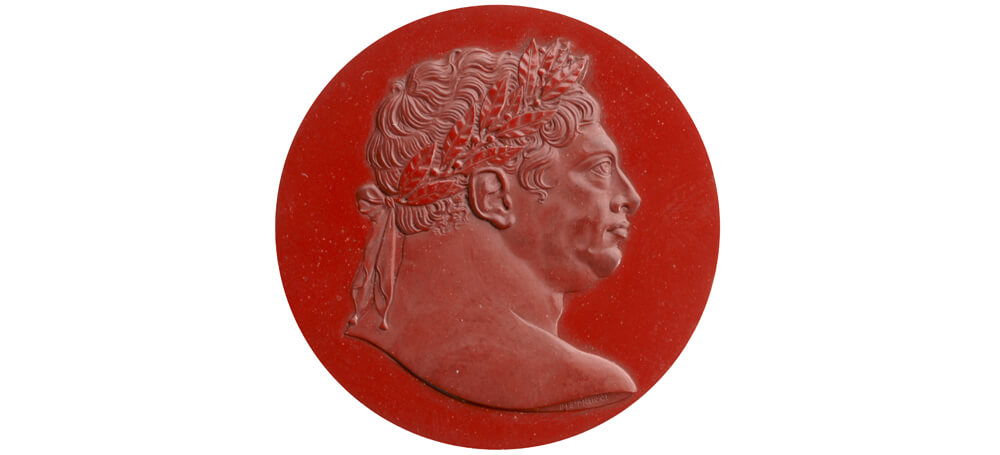Jasper Cameos
Benedetto Pistrucci came to Britain from Italy in 1815, having established for himself in Italy a considerable reputation as a gem engraver. Soon after his arrival, Pistrucci prepared cameo portraits for George III’s last coinage. The portrait was planned as part of the production and distribution of new gold and silver coins due for release as part of the recoinage of 1817. Pistrucci cut the original models in his natural medium of red jasper, and three of these models have survived in the Royal Mint Museum’s collection. Pistrucci was inexperienced at working with steel when he began his work in the Royal Mint, and the task was therefore given to Chief Engraver Thomas Wyon Jr., who engraved Pistrucci's design for use on the half-crowns in 1816.

Pistrucci’s time at the mint was marked by disagreements, and he blamed the engravers for spoiling his work when the coins bearing the effigy he designed were widely criticised after their release into circulation. The portrait became colloquially known as the Bull Head due to its bulky depiction of George III’s proportions. William Wellesley Pole, the Master of the Mint, was himself critical of Wyon’s copy of the work and responded to the negative reception by requesting for the revision of the portrait. So great was his concern that he instructed that the new half-crowns were to be sent to the most distant parts of the country to avoid being seen by London society.
